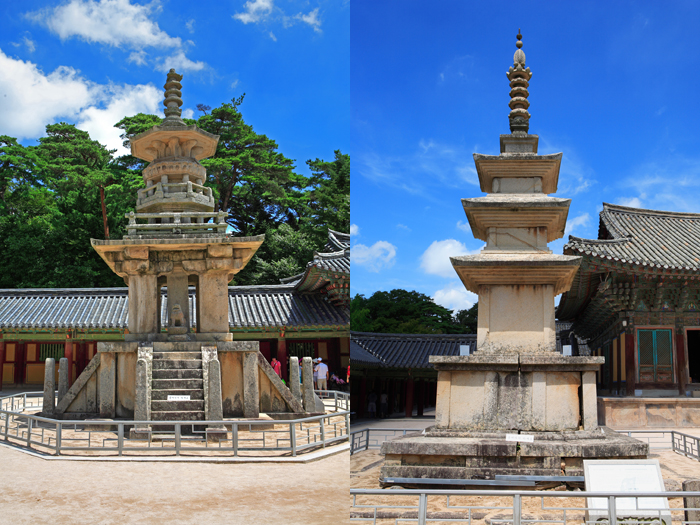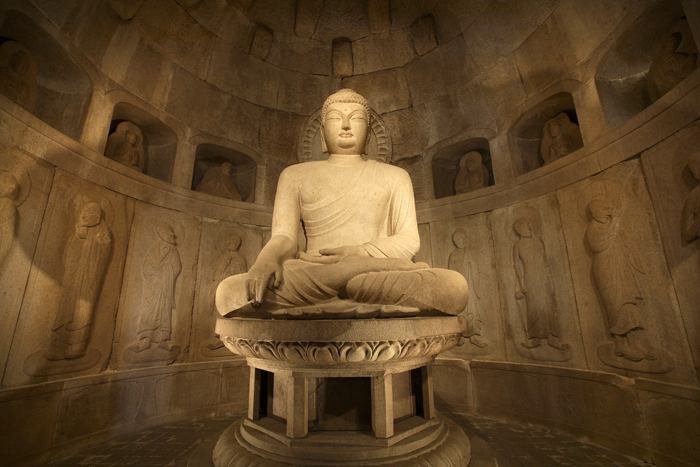- Get link
- X
- Other Apps
Buddhist Heritage in Korea – Temples, Statues, and Scriptures

Photo: The courtyard of Bulguksa Temple, a masterpiece of Korean Buddhist architecture.
🛕Korea’s Buddhist Cultural Legacy
Dabotap and Seokgatap

Photo: The iconic Dabotap and Seokgatap stone pagodas at Bulguksa Temple.
Bulguksa Temple, built in the 8th century during the Silla Dynasty, is one of the most significant Buddhist temples in Korea. It symbolizes the Pure Land of Buddha and represents a harmonious blend of architectural brilliance and spiritual meaning. The temple is famous for its twin pagodas—Seokgatap (simple and elegant) and Dabotap (complex and ornate)—which reflect Buddhist cosmology. The temple’s wooden halls, bridges, and stone terraces form a serene and sacred environment for worship and meditation.
inside Seokguram

Photo: The serene Buddha inside Seokguram Grotto, carved from granite.
Seokguram Grotto is a stone temple built into the slopes of Mt. Toham, overlooking the East Sea. Constructed in the 8th century, it houses a majestic seated Buddha surrounded by guardian figures and Bodhisattvas. This masterpiece of Buddhist art exemplifies the spiritual enlightenment and architectural ingenuity of the Silla Dynasty. The interior dome and layout are mathematically precise, creating a peaceful and contemplative atmosphere. It is considered one of the finest examples of Buddhist sculpture in East Asia.
📚 Tripitaka Koreana
Photo: The woodblocks of the Tripitaka Koreana stored in Janggyeong Panjeon at Haeinsa Temple.
The Tripitaka Koreana is an extensive collection of Buddhist scriptures carved onto over 80,000 wooden printing blocks. Created in the 13th century and preserved at Haeinsa Temple, it is renowned for its exceptional accuracy and craftsmanship. The woodblocks were designed for longevity and stored in a unique architectural structure that allows natural ventilation. This invaluable cultural asset not only preserves Buddhist teachings but also showcases the scientific and cultural sophistication of Goryeo-era Korea.
🪔 Symbolism and Architecture
Korean temples are often built in mountainous areas and follow geomantic principles. Their layouts, decorations, and carvings represent Buddhist cosmology, harmony with nature, and spiritual path.
💬 Final Thoughts
Korea’s Buddhist cultural heritage stands as a testament to the country’s spiritual depth, artistic achievement, and devotion to enlightenment. These sites continue to inspire reverence and reflection.
- Get link
- X
- Other Apps
Comments
Post a Comment